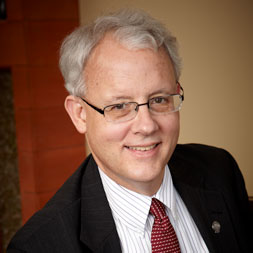
Contributor: Rogers Behavioral Health, with Michael M. Miller, MD, DFASAM, DLFAPA, Medical Director of the Herrington Recovery Center at Rogers Memorial Hospital.
Overdose deaths involving prescription opioids have quadrupled since 1999, according to the Centers for Disease Control and Prevention (CDC). From 1999 to 2015, prescription opioids contributed to more than 183,000 deaths.
What’s behind this surge in overdose deaths?
“The primary culprit is availability,” explains Michael Miller, MD, Medical Director of the Herrington Recovery Center at Rogers Memorial Hospital.
More Prescriptions in Circulation

About two decades ago, there was a movement to improve pain management in cancer treatment and in palliative care and hospice programs. Pain became recognized as “the fifth vital sign,” and physicians were encouraged to be more aggressive in treating it, including via the prescribing opioids.
During this same period, long-acting high-dose opioids like OxyContin were approved and aggressively marketed as a non-addicting choice for treating pain. But instead of limiting opioids to people who were coping with cancer pain or end-of-life pain, they were marketed and prescribed for treating long-term, chronic pain as well as acute pain caused by injury or surgery.
In the decades since, it has become clear how addictive these prescription opioids can be.
Having this influx of prescription opioids “in circulation” set off a chain reaction, leading to more people with active addiction, more people in addiction treatment and an increase in heroin use—the more affordable street drug that people resort to when prescription opioids become unavailable or unaffordable.
Today, the most common drugs involved in prescription opioid overdose deaths include hydrocodone (Vicodin), oxycodone (Percocet and OxyContin) and methadone.
Adults and Kids are at Risk
“There’s no place that’s a safe haven from this epidemic,” Dr. Miller says. It’s in every American community, in all 50 states, affecting all age groups, and in rural and urban communities alike.
“While it used to be that marijuana was the first illegal drug teenagers tried, today’s teens are more likely to experiment with prescription opioids,” Dr. Miller adds. “Opioids circulate at school when kids get their wisdom teeth removed or suffer sports injuries.
Teens can also find opioids in medicine cabinets—whether in their own homes or at relatives’ or friends’ houses. Even teens and adults who take opioids as directed are at risk for becoming addicted.
“Then, when their subscription ends or their supplies are reduced or become cost prohibitive, they are more likely to try heroin,” explains Tim Westlake, M.D., an emergency medicine doctor in Oconomowoc.

“About 80 percent of those who use heroin start with prescription drugs, and it’s often young people in their early 20s who we see overdosing on heroin.” Statistics from the CDC underscore the severity of this epidemic: More than 1,000 people a day are treated in emergency departments as a result of misusing prescription opioids.
About 25 percent of those who receive prescription opioids in long term primary care settings struggle with addiction.
Overdose death rates are highest among non-Hispanic whites between the ages 25 and 54, who were originally prescribed opioids to treat chronic pain.
Stemming the Epidemic
Doctors are now more careful when prescribing opioids. Even the director of the CDC has goneon the record saying that “the risks of opioids include addiction and death, and the benefits for chronic pain are often transient and generally unproven.”
In an effort to reduce the abundance of opioids in the community, a coalition of health care leaders in Wisconsin gathered to create new guidelines governing opioid prescriptions.
In September 2016, the Wisconsin Medical Examining Board adopted these guidelines. “The guidelines are primarily a tool to help doctors practice better and to help our communities become safer,” Dr. Miller says.
To prevent the risk of opioid addiction or overdose, the guidelines advise doctors to consider nonsteroidal anti-inflammatory drugs as the first choice for treating pain.
Sprains, broken bones and other injuries may not need opioids at all. And if they are needed, they should be limited to only a few days.
The guidelines also help doctors educate patients about the risk for opioid addiction—and how to manage patient expectations. “People must realize that pain management doesn’t mean no pain,” Dr. Westlake says.
 “It means that the pain becomes manageable until they are healed. When I see someone with a broken ankle, they need to know that they can expect some pain for a week or two.”
“It means that the pain becomes manageable until they are healed. When I see someone with a broken ankle, they need to know that they can expect some pain for a week or two.”
Dr. Miller says the guidelines will also help doctors talk to their patients about the need for safe medication storage and disposal—“so the medicine cabinet ceases to be this mother lode of supply.”
The licensing board is also making it mandatory for every doctor in Wisconsin to receive education on this topic in order to renew their license.
 About the Author:
About the Author:
Michael M. Miller, MD, is a board-certified general psychiatrist and addiction psychiatrist. He has practiced addiction medicine for more than 30 years and is certified in addiction medicine by the American Board of Addiction Medicine.
He is a Distinguished Life Fellow of the American Psychiatric Association (APA) and a Distinguished Fellow of the American Society of Addiction Medicine (ASAM). Dr. Miller is also an at-large director of the American Board of Addiction Medicine (ABAM) and The Addictions Medicine Foundation, as well as a past president of ASAM.
Dr. Miller has served on many task forces and councils of ASAM and the Wisconsin Medical Society (WMS), was chair of the WMS Commission on Addictive Diseases, and is current Speaker of the WMS House of Delegates and a member of the Society's Board of Directors.
He serves as a faculty member for the Addiction Psychiatry Fellowship and the Addiction Medicine Fellowship at the University of Wisconsin School of Medicine and Public Health, where he is a full professor on the clinical faculty. He also is an assistant clinical professor in the psychiatry and behavioral medicine department at the Medical College of Wisconsin.
References:
[1] http://www.wiseye.org/Video-Archive/Event-Detail/evhdid/10912
[2] https://www.cdc.gov/drugoverdose/data/overdose.html
The opinions and views of our guest contributors are shared to provide a broad perspective of addictions. These are not necessarily the views of Addiction Hope, but an effort to offer discussion of various issues by different concerned individuals.
We at Addiction Hope understand that addictions result from a combination of environmental and genetic factors. If you or a loved one are suffering from an addiction, please know that there is hope for you, and seek immediate professional help.
Published on July 17, 2017.
Reviewed By: Jacquelyn Ekern, MS, LPC on July 17, 2017.
Published on AddictionHope.com
